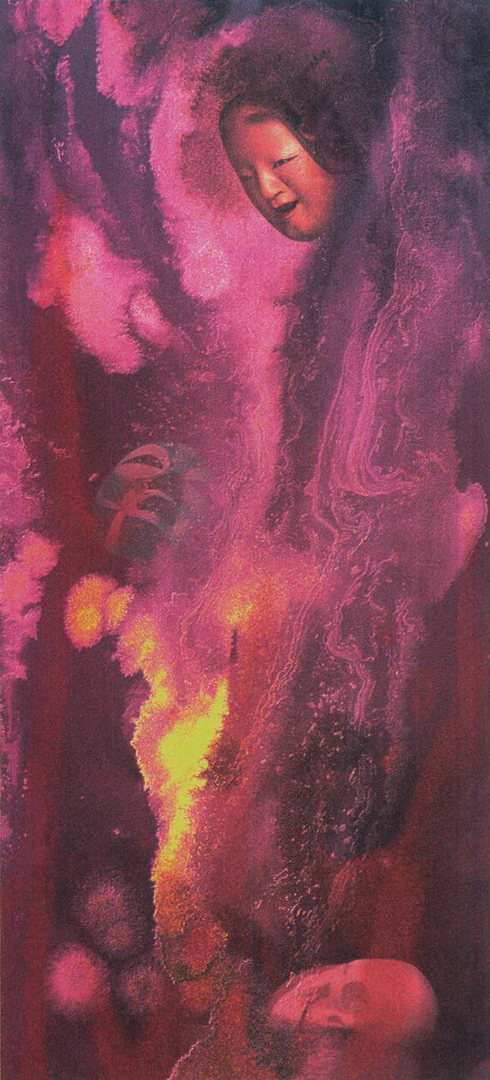Akiko Tohma: What Noh Masks Whisper to Us
Artist(s):
Title:
- What Noh Masks Whisper to Us
Exhibition:
Creation Year:
- 2001
Medium:
- Ink jet print on Pictorico fancy paper
Size:
- 45cm x 100cm
Category:
Keywords:
Artist Statement:
The representation of the human face is an endless motif for art. It continues to attract artists working on traditional paintings and sculptures, and those using today’s digital technologies. The existing sophisticated skills for face representation can bring us a lot of suggestive information. Noh masks, wooden sculptures used in Japanese traditional Noh drama, can be considered as one example.
The masks used in Noh drama show diverse types of faces. However, a common impression given by Noh masks seems to be a “curious reality” – the coexistence of abstraction and deformation. This kind of realism could have never been achieved without an understanding of the anatomical essence of face shapes. Indeed, the observation of fine old masks, carved around the 14th century for example, suggests that the masters might well have understood the facial bone and muscle structures of the human face. Viewers are therefore able to project their memories of human faces onto the masks.
This digital image was created under the observation of a Noh mask’s shape. The Noh mask appearing in the upper center of the image is a Ko-ornate mask used for young female roles. In the middle, there is an image of the mask with facial muscles, which are imagined to be beneath the Ko-omote face. The imagined skull of the Ko-ornate mask lies in the lower part. These three states, i.e., face, muscles, and bone, are arranged vertically, suggesting the aesthetic principles of traditional Japanese arts: TEN (Heaven-Space); CHI (Earth-Time); JIN (Man) also expressed in terms of SHIN (Formality); GYO (Semi-formality); and SO (Informality). The image also suggests the transition between life and death, or past and present, which are often described in Noh stories.
The Ko-omote mask was created using a 3D computer graphics technique.’ The modeling process introduced a method of replicating a wooden Noh mask. Here, paper templates were created by measuring a wooden Ko-ornate mask and then digitized as guide curves for NURBS surface modeling. The use of a 3D scanner was therefore unnecessary. The surface texture of the mask was created using paint-draw software. Curves of facial muscle fibers were traced from anatomical data and projected onto the mask’s surface. The shape of the skull was modified to fit the Ko-ornate mask.
Affiliation Where Artwork Was Created:
- Kagoshima University
Other Information:
References
1. Tohma, A., Shimohara, K., Tohkura, Y. and Yokoya, N. (2000). Creation of a Noh Mask Using a 3D Computer Graphics Technique. Proc. IEEE International Conference on Information Visualization, 407-412.





